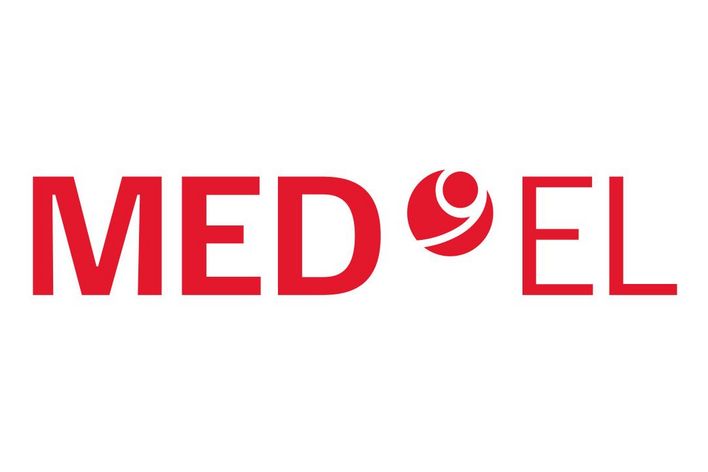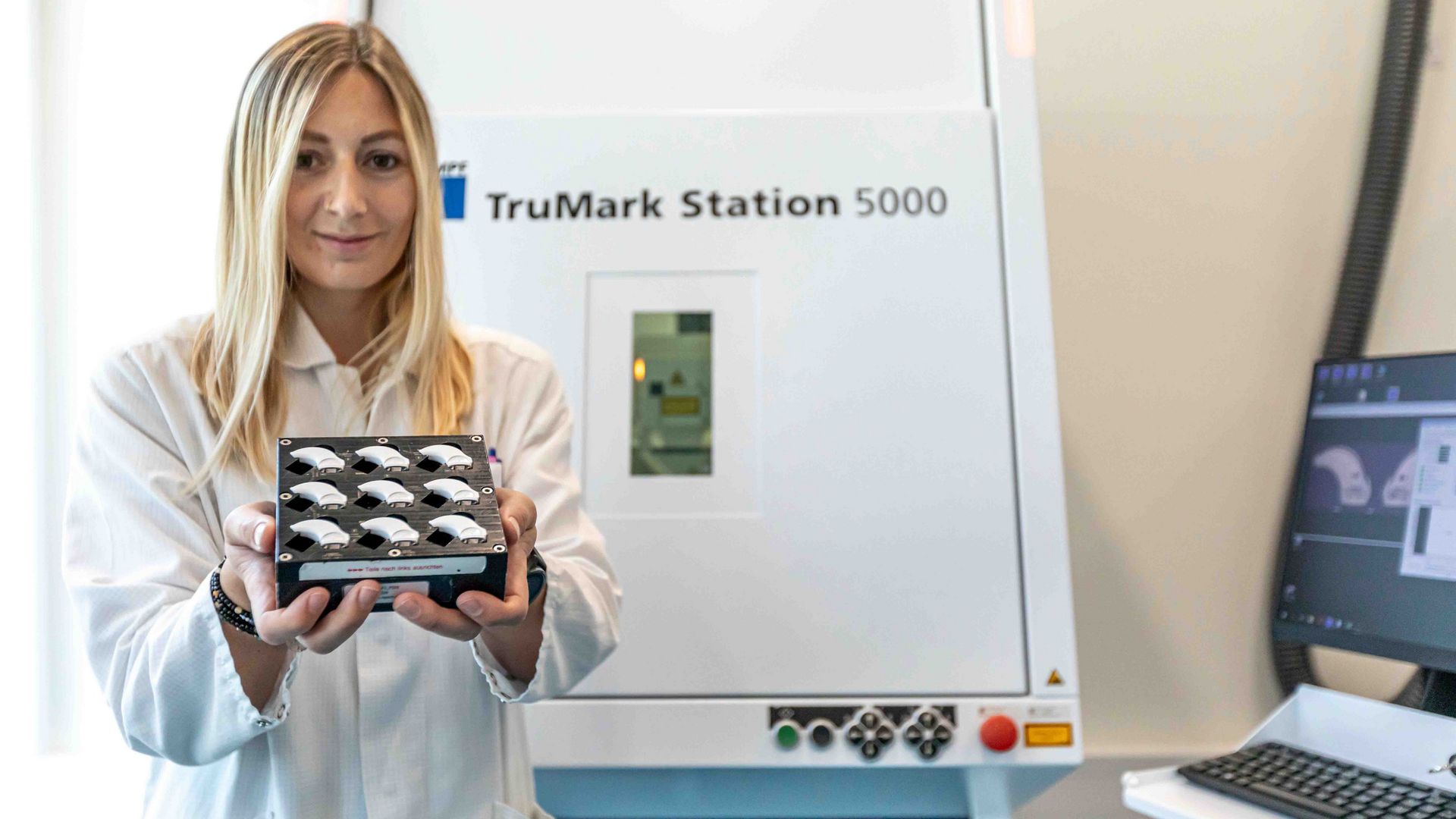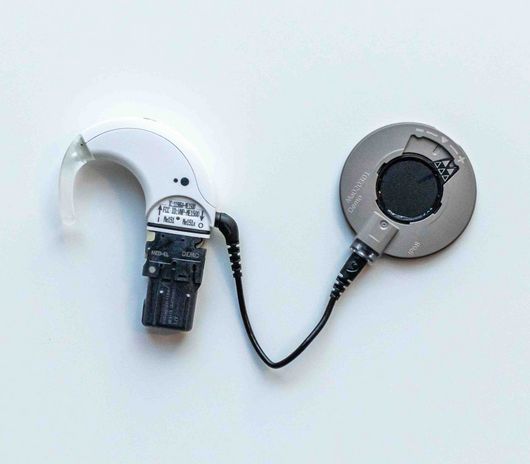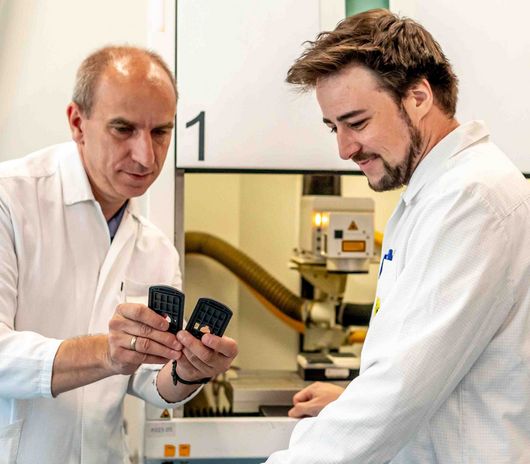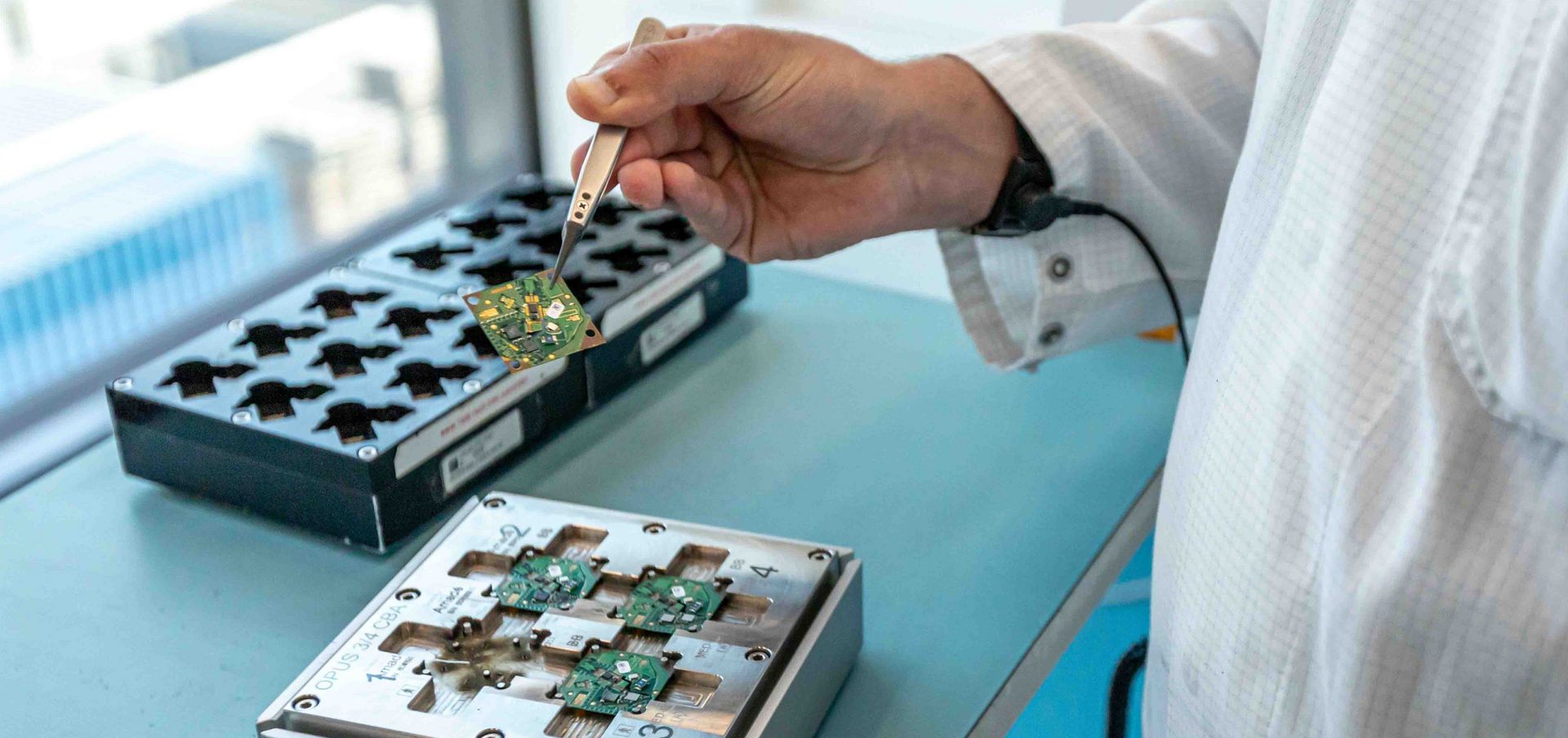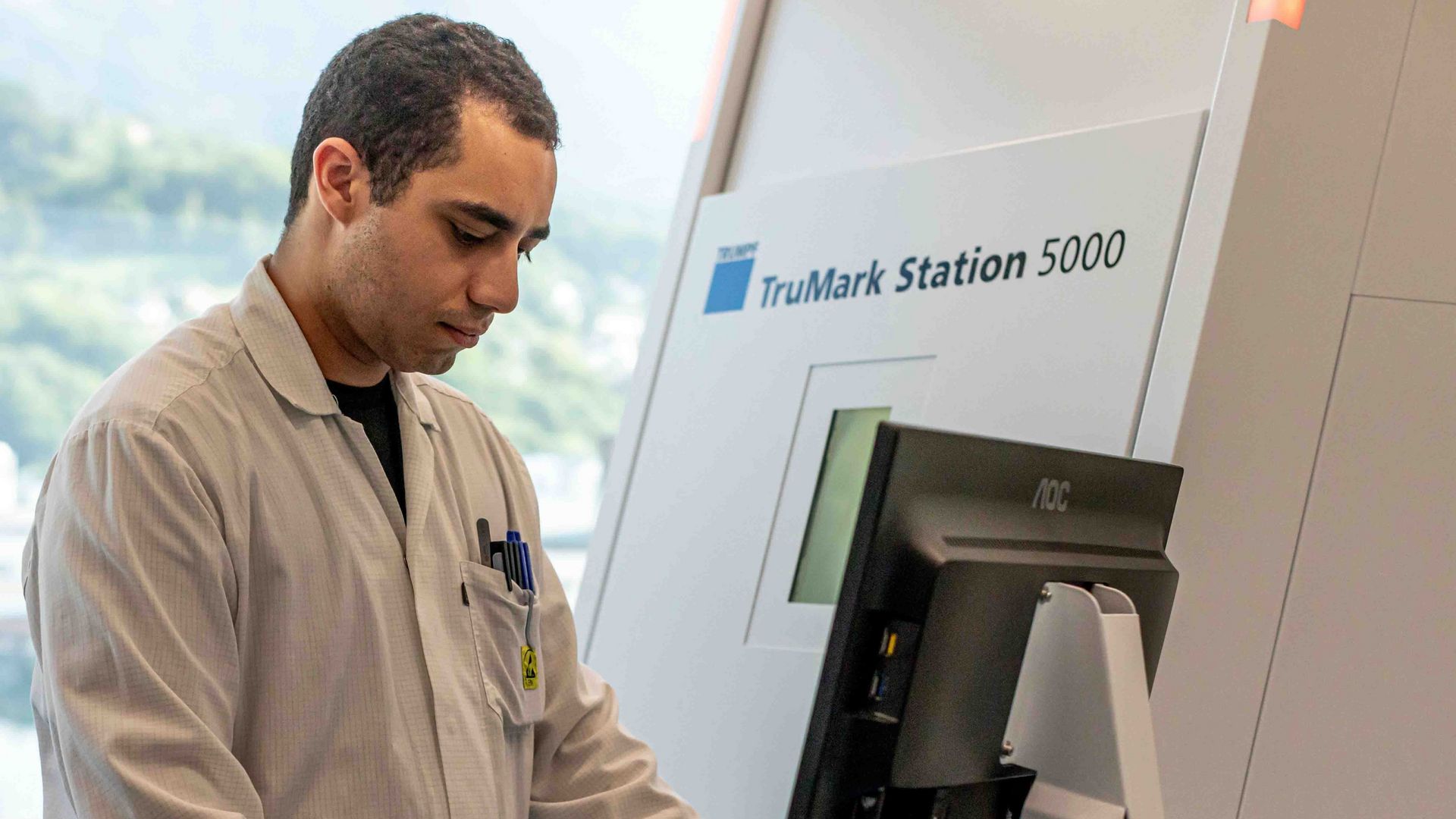Solutions
The marking laser, initially a TRUMPF Vectormark VMC4, has been delivering the required flexibility for marking tasks at MED-EL since 2004. Prior to this, external service providers were responsible for marking the parts. In the long run, this proved to be extremely slow and inflexible. Christoph Fankhauser, Deputy Group Leader for Manufacturing External Devices at MED-EL, takes up the story: "Regulatory requirements mean that we have to modify the markings frequently. Additionally, fluctuations in material quality often necessitate swift laser adjustments to ensure the markings remain easily readable." "If we have to coordinate this with a supplier beforehand, it results in unacceptable time delays," The laser marking of parts is too critical for such delays. In 2010, the company introduced its first TruMark Station 5000, in a bid to move this crucial production step in-house, underscoring the significance and premium quality of the markings. "Our primary applications involve affixing serial numbers and machine-readable UDI codes onto metal and plastic parts." Fankhauser points out, "We also incorporate symbols such as arrows and notes to enhance user-friendliness."
Given that many of the markings are visible on the final product, MED-EL places significant emphasis on maintaining consistent font styles and sizes. Achieving a high contrast is crucial for this purpose, as it guarantees excellent readability. "And, of course, the markings have to be reproducible," emphasizes Fankhauser. "The TruMark laser fulfills these requirements, even when marking extremely small parts."
Implementation
MED-EL currently has a total of three TruMark Stations 5000 units in their production area. These machines are used for marking implant components, as well as external system components and accessory parts. All marking stations use TruMark Series 3000 lasers. Fankhauser notes, "We initially began with a green laser, but we now use infrared light with a wavelength of 1064 nanometers due to its exceptional flexibility."
MED-EL uses the marking lasers to label plastic components as well as the metal housings of implants. These are made of titanium, and some parts of platinum-iridium alloys. The greatest challenge is the marking of plastic parts. Fankhauser elaborates, "We handle an extensive range of products, encompassing over 1,000 items that require marking with unique product codes and serial numbers." Due to the substantial variety of parts sourced from suppliers, we sometimes encounter variations in material quality within specific batches. Time and again, the production team finds itself adjusting the laser parameters. "At the same time, there is very little space on the parts and yet we still have to ensure the machine readability of the marks. It isn't always easy." Nonetheless, the dedicated team addresses this challenge by combining their specialist expertise with the precision of TruMark marking lasers.
In series production, MED-EL also uses the TruMark lasers for depaneling blanks. "We are very enthusiastic about conducting testing and experimentation", says Fankhauser. "We use the lasers for marking prototypes, and we conduct cutting and marking trials on a wide range of materials in collaboration with the development department," Fankhauser explains. Dietmar Köll, his colleague, affirms that this spirit characterizes MED-EL, saying, "Even after all these years, our processes remain adaptable and dynamic. "We are always working on new developments and we are happy to adapt and innovate."


